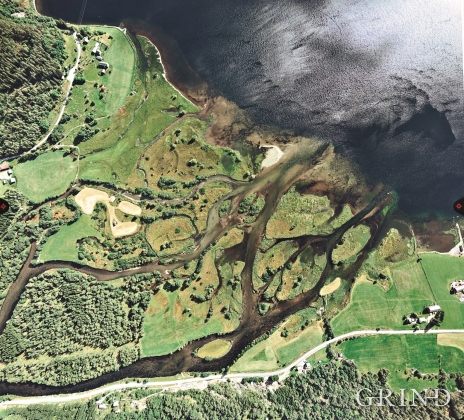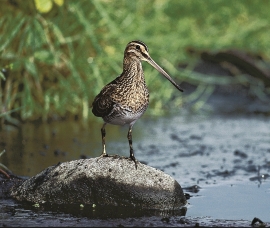Published: 11.08.2015 | Author: Stein Byrkjeland
The Strandaelvi river is forever protected from the development of hydropower. The Lønaøyane islands – which comprise the delta furthest north in Lake Lønavatnet - are a part of this water system. In 1995 the level of protection for the Lønaøyne islands was strengthened to that of a nature preserve because of the rich birdlife in this wetland.
After the Myrkdals delta was strongly affected by the sinking of the water levels and agriculture, Lønaøyane is considered to be the richest bird area in the Voss region - the diversity also gives it a ranking among the most valuable in the county.
There is also a great diversity of wetlands plant such as water horsetail, beaked sedge and blister sedge in the preserve - some places also canary grass. A total of 135 bird species are documented in the area, of which 36 are probably nesting birds. Among others there is a good nesting population of different wading birds and ducks. The Common Gull nests permanently. 1-2 pairs of tufted ducks make an attempt at nesting each year, but the nest is often carried away by floods. Some years even a pair of Oystercatchers nest here, though they are normally bound to the coast. During migrations Tufted Ducks and Lapwing are the most abundant. Late in the autumn one can see flocks of Song Swans on Lake Lønavatnet. When the water freezes to ice, the ice fisherman take over the bird food platter, to secure a bit of char and trout from the lake.
In August, 1998, a bird observation tower was built in the preserve, with free access. It is reached by a marked trail from the parking lot at Nesheimtunet (top left in the aerial photo).
- Håland, A.; Chapman, E. 1998. Ornitologisk status for 4 naturreservater i Voss/Hardanger-regionen.Vurderinger av trusler, skjøtselsbehov og tiltak for informasjonsformidling. NNI-rapport 19.




